NOS
CALOCEDRUS
PAGE |
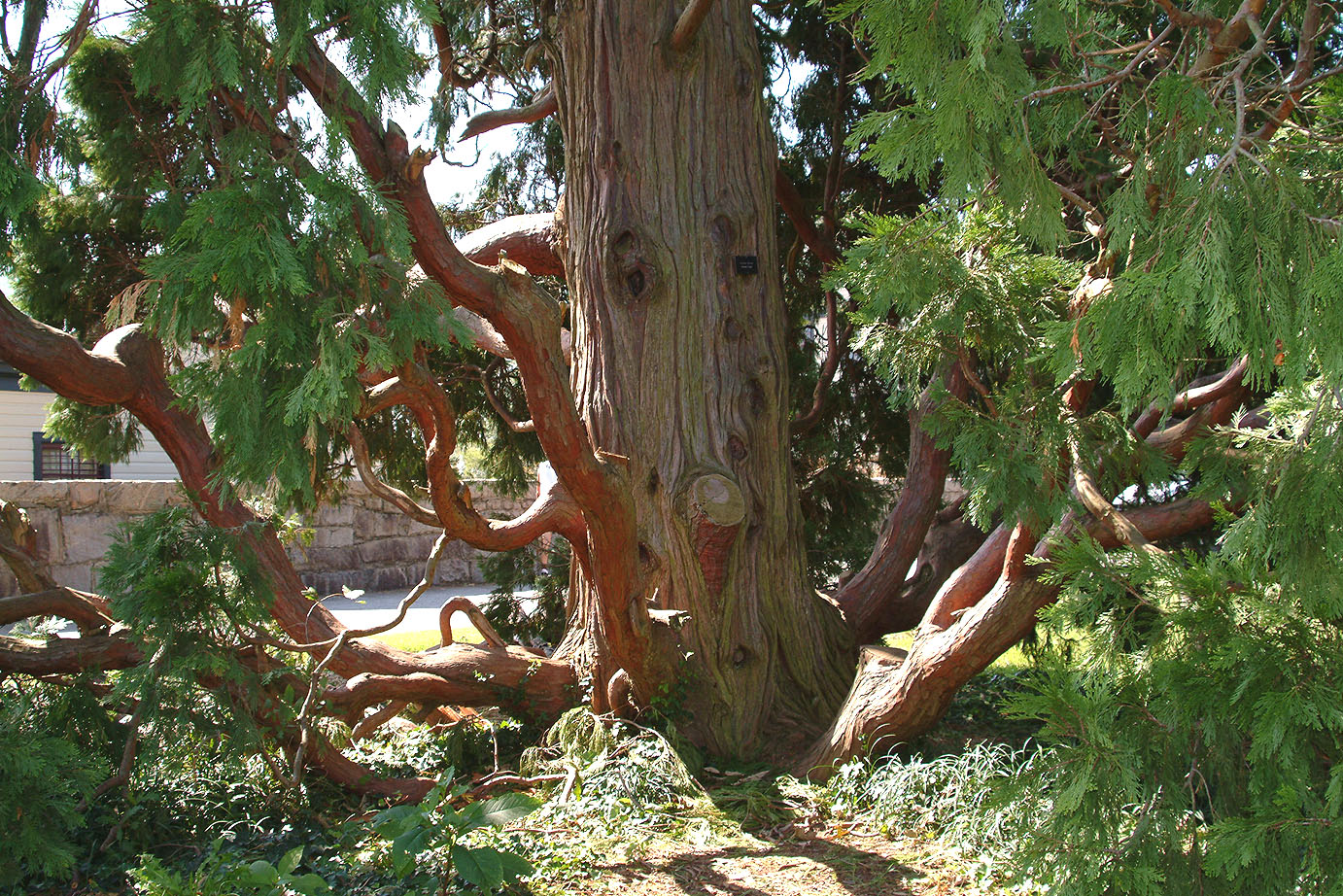
|
Copyright
1998-2003. New Ornamentals Society. All Rights Reserved.
Lawful for online access only by current
society members.
All downloading, printing, saving to media, or offline
use is prohibited.
Do not link to this page. |
Calocedrus
decurrens is one of the great conifer species for modern gardens.
This wonderful plant that I like to call "the octopus" exists not in a
great California park but in the Old South. It has endured hurricanes
and storms for over a century at the Maymont estate gardens of Richmond,
Virginia, a couple of hours from the American capital. The species has
class, charm, and elegance on either US coast and in countless countries
around the world. It is truly a "tree fern" and one also gets the most
wonderfully textured reddish-brown bark in existance. Unlike most Thuja
species this species ages to develop more character and beauty.
The two trees below are over 75 years
old at the old fairgrounds (now rose garden and theatre) in Raleigh NC.
Similarly fine trees exist all over the eastern and southeastern US.
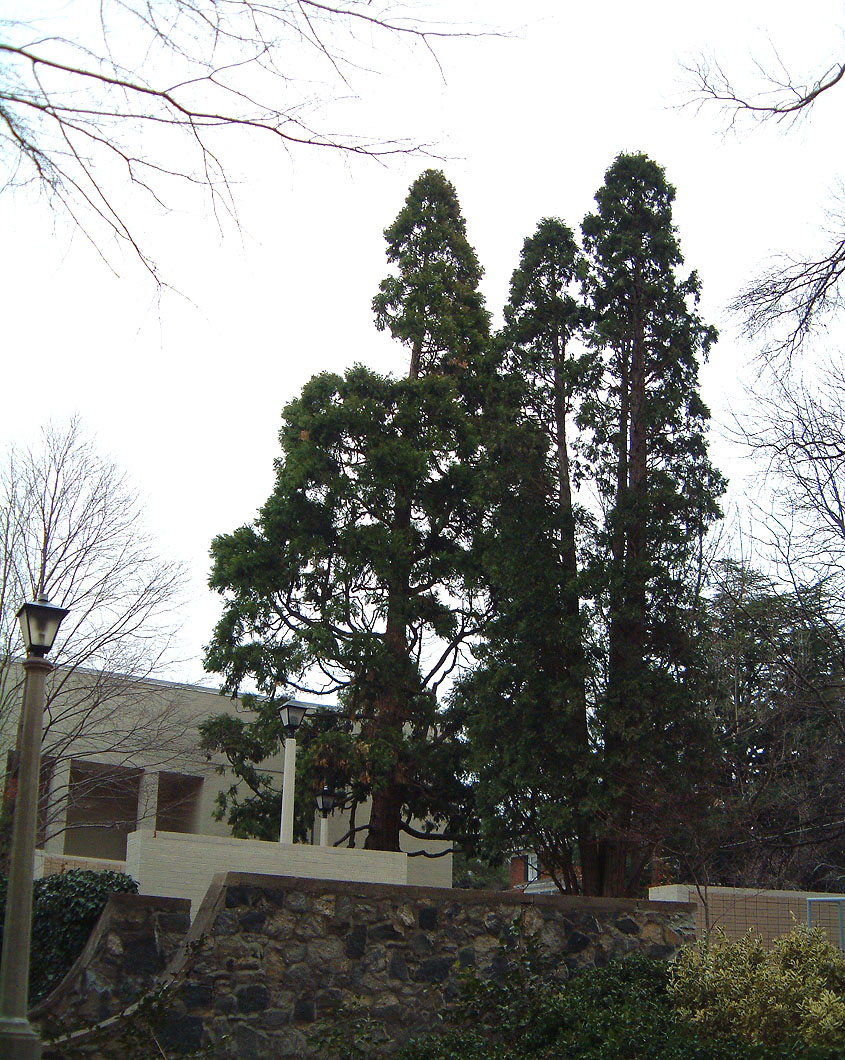
Click images for a larger version.
Scroll down below for the amazing
C. macrolepis
LCH
|
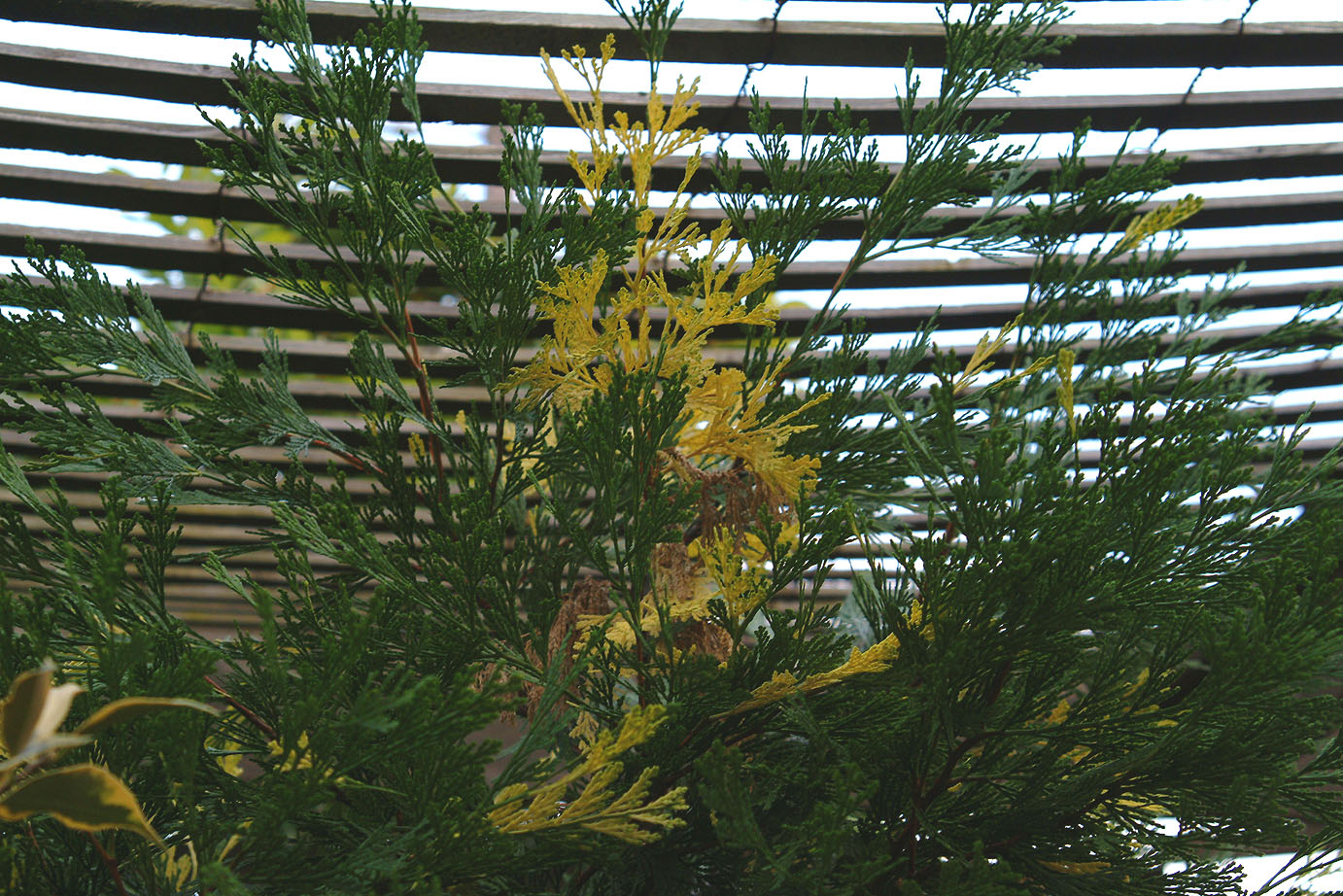 click
image to enlarge
click
image to enlarge
Calocedrus
decurrens 'Aureovariegata'
lc:
mottled golden yellow, quite irregularly, some shoots being 80%
chimera and others much less so. Contract between the yellow and dark green is
lc: one of the best, starkest contrasts in the conifer world.
li: Beissner, L. 1904. Mitt. D.D.G. 13: 257
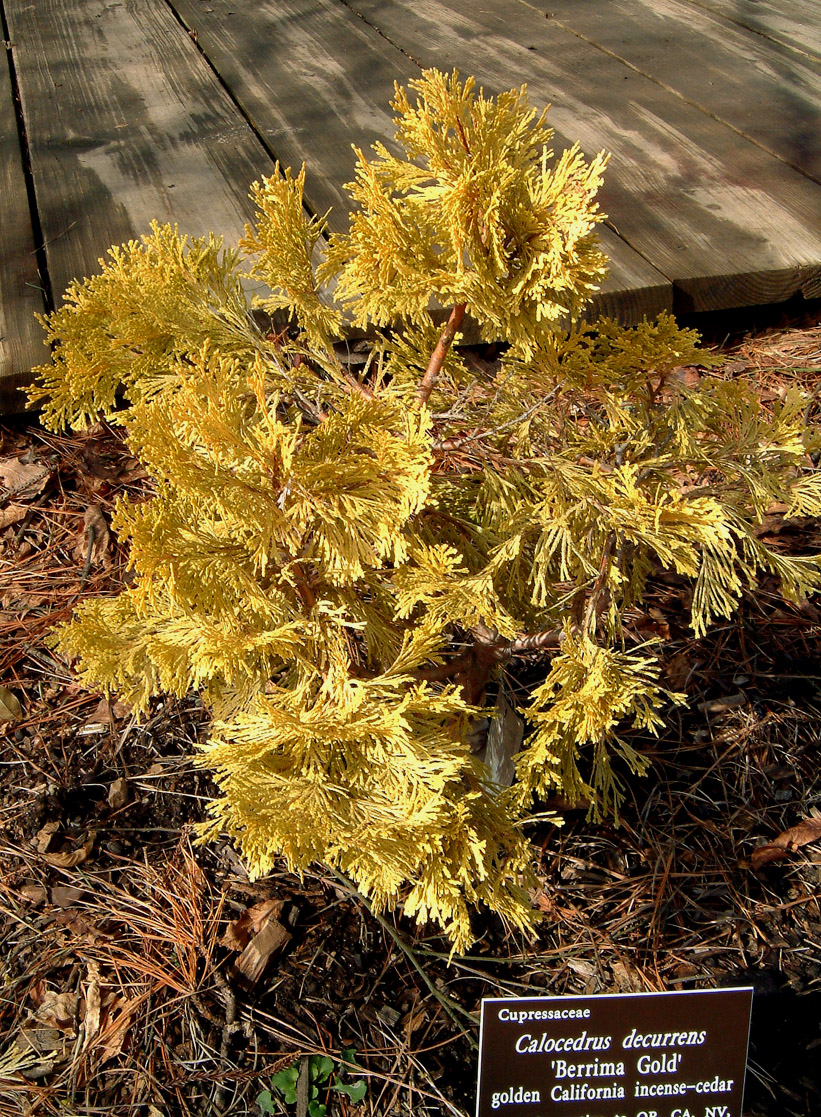 click
image to enlarge
click
image to enlarge
JC Raulston Arboretum. Summer 2003.
Calocedrus
decurrens 'Berrima Gold'
ha: broadly columnar
gr: 6-10 in. per year
lc: whitish gold to yellowish-green in spring and summer.
afc: often a nice golden-orange in fall and winter.
lu: requires partial shade to prevent sunscorch.
so:
Stanley and Sons
Calocedrus
decurrens 'Columnaris'
ha: more
narrowly columnar, short and crowded branchlets
ns: very narrowly columnar and fastigiate variants are common in
gardens among seedlings.
li: Beissner, L. 1884. Die Zierg. p. 472
Calocedrus
decurrens 'Compacta'
ht: 6 ft.
ha: compact, dense, often globose, growing 2-4 in. a year
li: Beissner, L. 1891. Hand. der Nadel. p. 30
Calocedrus
decurrens 'Depressa'
ns: a
listed name, not in the trade today.
Calocedrus
decurrens 'Glauca
lc: more
glaucous blue
li: Beissner, L. 1884. Die Zierg. p. 472
Calocedrus
decurrens 'Horizontalis'
ha:
branching somewhat horizontal
or: Spaeth (Catalog 1891)
Calocedrus
decurrens 'Intricata'
ht: 60cm
tall x 35-45cm wide (12 years)
ha: dwarf, compact, upright
lc: tips of sprays sometimes brownish
ns: named for the intricate pattern of dense branch formation
or: James Noble, San Francisco, CA USA as seedling
li: Hillier, H.G. 1964. Dwarf conifers. p. 42.
Calocedrus
decurrens 'Maupin Glow'
ht: 15 ft.
ha: columnar
gr: 6-12 in. per year
lc: bright yellow, not burning in sun
or: Greg Rigby of Horseshoe Nur. found in Deschutes Co. near
Maupin OR
so:
Stanley and Sons
Calocedrus
decurrens 'Nana'
ha: dwarf,
compact
li: Dallimore, W. and A.B. Jackson. 1923. A Hand. of Conif. p.304
Calocedrus
decurrens 'Pillar'
ha:
fastigiate, pillar-shaped
Calocedrus
decurrens 'Pioneer Sentry' (8/01)
ht 40 ft. tall when 3 ft. wide
ha: more narrowly columnar to fastigiate
lc: bright green
or: found at Portland Cemetary, Portland OR
in: Stanley and Sons c. 2001 (online catalog 2001)
so:
Stanley and Sons
Calocedrus
decurrens 'Riet'
ht: 3 ft.
tall x 3 ft. wide
ha: compact, globose
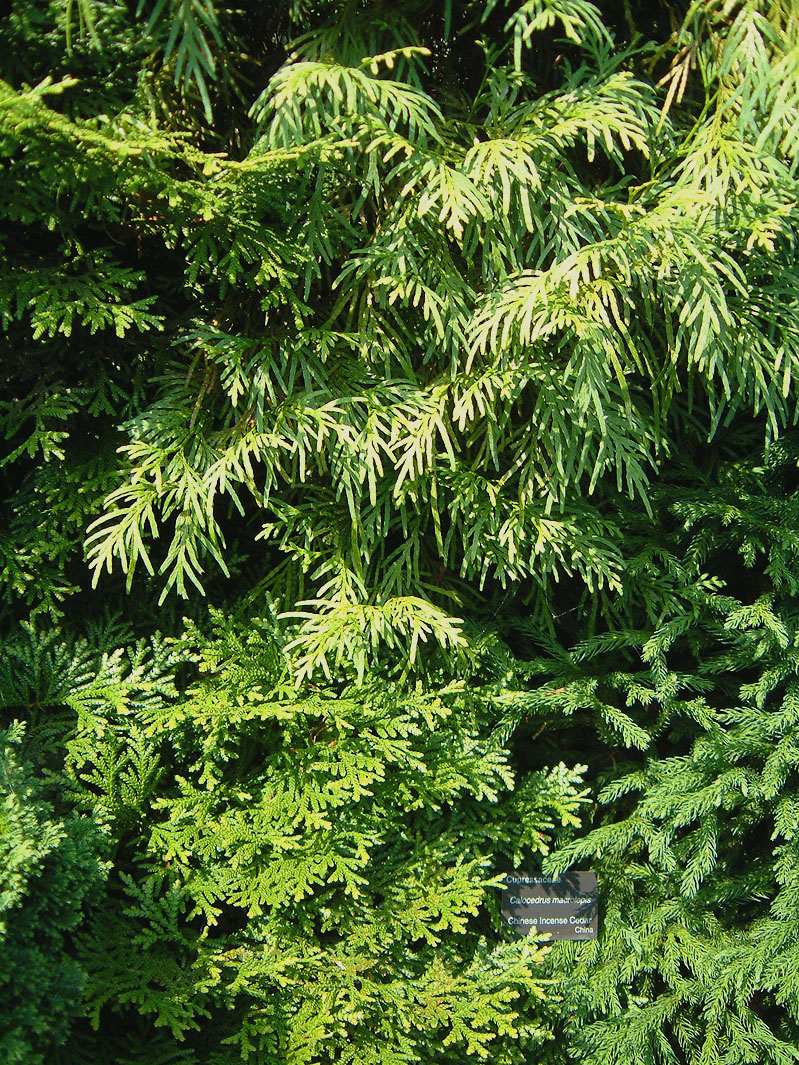
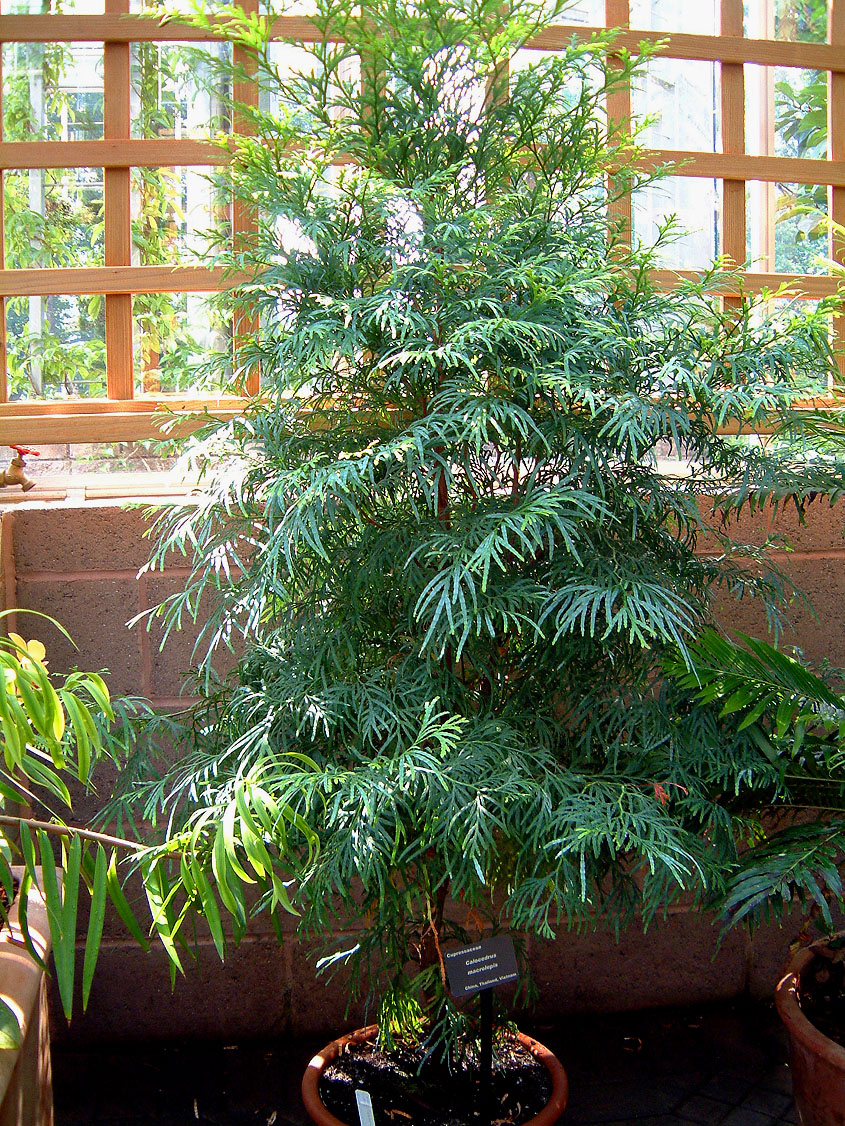 click
image to enlarge
click
image to enlarge
Atlanta Botanical Garden. Summer 2003. These wonderful Calocedrus trees are
planted both outdoors and indoors in the Atlanta, Georgia climate.
Calocedrus macrolepis





